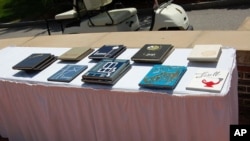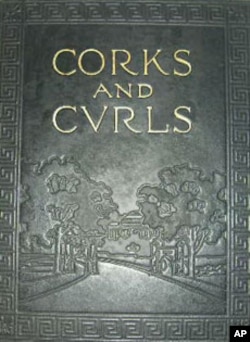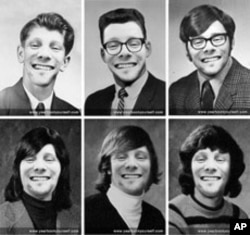One of the cozy traditions associated with college life is receiving and then pouring over your copy of the annual yearbook. Just about every student's picture appears in the heavy, richly bound souvenir annual book, often in stiff, formal poses.
Like campus student newspapers, yearbooks also recap the activities of the athletic teams, student government organizations, fraternities and sororities - even the math and chess clubs.
Years later when you reopen the yearbook, the stories, photos, fashions and memories seem sweet and nostalgic.
But yearbooks are not cheap. Fat ones at big universities can cost students 100 dollars or more.
And even though it's usually unpaid student labor that produces them, they are expensive to print, which is why more and more schools have simply stopped producing them. The Washington Post reported, for instance, that the University of Virginia's yearbook, called "Corks and Curls", has ceased publishing one year shy of its 120th anniversary.
But money's not the only reason that just a third of U.S. colleges now put out yearbooks. Some of the schools have grown so large, so spread out among regional campuses, and so fragmented into academic specialties that summarizing everything that goes on, and coaxing 30-40,000 students to pose for those stiff mug shots are nigh unto impossible.
And in these days when it seems that everything you'd ever want to know about college activities can be found on online, who needs a heavy, costly printed yearbook?
Last year,the Washington Post reported, Towson University near Baltimore, Maryland, with a student body of 20,000, sold just two dozen yearbooks. That's about one for every 880 students and faculty members, hardly enough interest to justify all the work and all the money, that go into putting a yearbook together.
If you were wondering where the University of Virginia's unusual yearbook name, "Corks and Curls", came from, it's not what you'd think. Back in 1888, when the first edition was published, students who did not know an answer when called upon in class were called corks, as in corks that plug an open bottle. Curls, or those who knew the answer when called on, got their name from an obscure Sanskrit saying about curling one's tail in delight.








